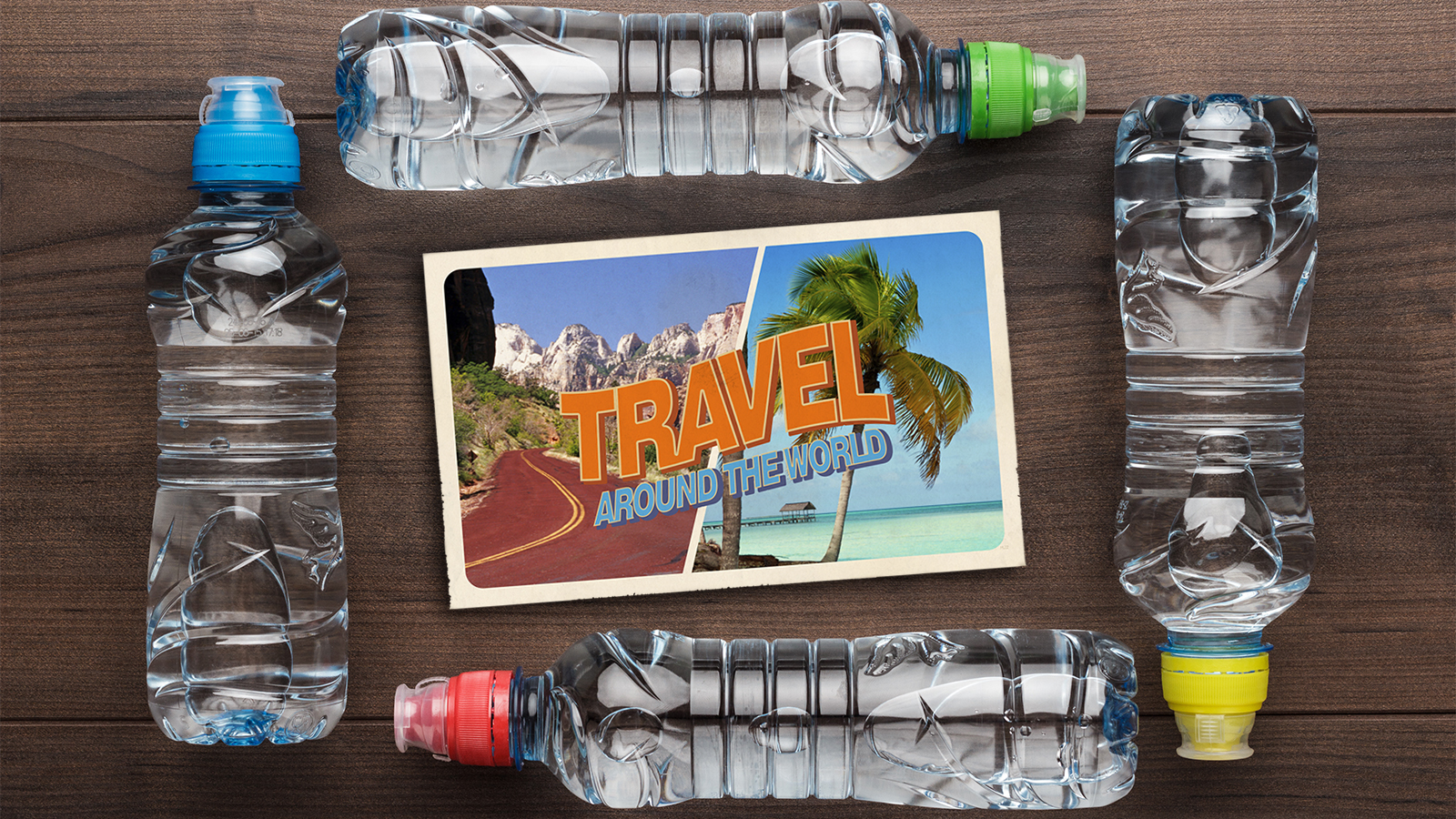Q. Dear Umbra,
I’m moving abroad for work to a less-developed country where I will have no option but to drink bottled water, and there isn’t a recycling program for the empty bottles. I’ll be there for one year, and my work provides shipping of household effects. How can I minimize the environmental impact of relying on bottled water? Would it be less harmful to save the empty bottles for the year and include them in my shipment of household effects back to the United States, where they can be recycled? Or would adding the extra weight to my shipment offset the benefits?
Ben
Washington, D.C.
A. Dearest Ben,
As you haven’t specified your destination or your employment, my mind is awash with exciting guesses: Will you be tracking gorillas in Rwanda? Fighting cyber-crime in Indonesia? Building dollhouses in Uzbekistan? So many possibilities, all tied together by a sense of adventure — and by the fact that wherever you are headed, you apparently can’t drink the water.
It’s wise to be careful about what you imbibe everywhere around the world, whether you’re moving abroad, traveling, or traipsing around the wilderness here at home. Water supplies can be plagued by a host of bacteria, viruses, protozoans, and other parasites, all of which can leave your unsuspecting digestive system roiling — or worse. (Although the U.S. has one of the world’s safest water supplies, lead contamination is a major concern across the country. That’s a topic for another day.)
Bottled water is one option to avoid these risks. But I shudder to think about how many bottles you’ll go through in an entire year at your mystery destination. Without recycling facilities close at hand, most bottles there are surely bound for dumps or landfills if they don’t simply become litter. And even if you crushed each one, shipping them back home for recycling would be a mighty inefficient way to handle disposal. I don’t think your employer expects “household effects” to include 1,000 water bottles (assuming you down three a day), and the very image of that many plastic bottles should give you pause. On top of that, no matter what you did with the bottles after draining the last drop, you’d still be accountable for the sizeable carbon footprint required to manufacture and ship each plastic vessel to your location in the first place. Don’t be that guy, Ben.
But Umbra, I can hear you saying, I’m looking at two not-so-great choices: Waste resources by drinking only bottled water, or spend the year curled in the fetal position on the bathroom floor. Luckily for you and other traveling types, Ben, there is a third option here: water purification.
From larger home systems to gadgets that treat individual glasses of water, from mechanical to chemical to optical means, there are quite a few easy-to-use methods that will remove or kill germs from your new water supply. They’re effective and affordable, can be used no matter what your living situation will be, and will allow you to bypass the water bottle conundrum. Allow me to elaborate.
I should note that it’s crucial to shop for a water purification system, not just filtration. Purifiers vanquish bacteria, protozoa, and viruses; the same cannot be said for non-purifying filters, which can allow super-small viruses to pass through. Do read the fine print, or live to regret it.
Now. You can certainly find a large purification system to install in your new home, but those tend toward the spendy (think $500 to $1,000-plus), so it might not make sense to invest for your yearlong deployment. A travel-friendly UV light treatment or purifying filter might be just the ticket: Both are reusable, can go wherever you do, and cost much less (from about $100 to $300). How do they work? So glad you asked.
A UV light device zaps all pathogens very quickly and doesn’t add any funky tastes to the water. But the smaller, portable types (like this one) only handle a liter or so at a time, which can get a bit time-consuming if you need larger volumes. Plus, you’ll need to pre-filter water that’s cloudy or silty, as suspended particles reduce the gadget’s effectiveness. Most purifying filters work by forcing water through micropores that snag germs (except viruses, in many cases). Purifying filters go the extra mile to eliminate viruses, too, sometimes by adding a chemical treatment step or by using a specially charged filtering material. They’re also quick and taste-free, but might require periodic declogging. UV purifiers tend to last longer than filter cartridges, so that tips me in their favor — but both will work for you. And finally, there’s always old-fashioned boiling — a disinfection method that’s imperfect, but handy if you’re using the water for cooking or coffee.
A toast — of clear, purified water, of course — to your journey! And be careful out there. I’d hate to have a tap-water ice cube in your margarita fell you after all this vigilance.
Microbially,
Umbra



